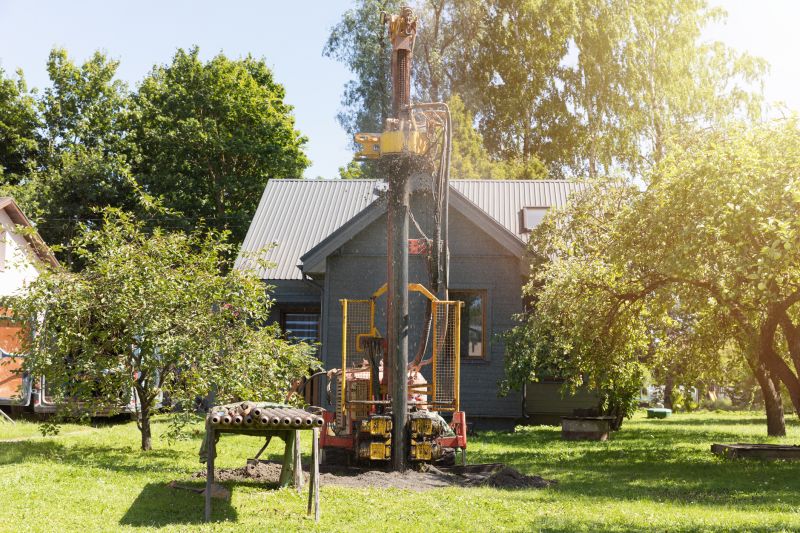Popular Water Well Drilling Solutions for Reliable Water Access
Explore innovative products that help ensure consistent water extraction and long-lasting well performance.
 Water well drilling equipment encompasses a diverse range of tools and machinery designed to access underground water sources for various applications, including agricultural irrigation, residential water supply, and industrial use. The core components include drilling rigs, drill pipes, casings, and drilling bits, each tailored to different geological conditions and depth requirements. Selecting the appropriate equipment involves understanding the specific needs of the site, such as soil type, depth, and water yield expectations.
Water well drilling equipment encompasses a diverse range of tools and machinery designed to access underground water sources for various applications, including agricultural irrigation, residential water supply, and industrial use. The core components include drilling rigs, drill pipes, casings, and drilling bits, each tailored to different geological conditions and depth requirements. Selecting the appropriate equipment involves understanding the specific needs of the site, such as soil type, depth, and water yield expectations.
Top Overall Option
Multi-Purpose Water Well Drilling Rig
A versatile and adaptable drilling rig designed for various project sizes and geological conditions, offering adjustable depth capabilities and user-friendly operation. It features a sturdy frame, reliable power source, and modular components to accommodate different drill bits and casing systems, making it suitable for both professional contractors and serious DIY enthusiasts.
Types of Products For Water Well Drillings
Portable Rotary Drilling Rigs
Compact and mobile rigs suitable for small to medium projects, capable of drilling to moderate depths with ease of transport and setup.
Crawler Mounted Drilling Rigs
Heavy-duty rigs mounted on crawler tracks for stability and mobility in challenging terrains, ideal for larger-scale projects.
Percussion Drilling Equipment
Tools utilizing percussive force to break through tough rock formations, often used in hard geological conditions.
Cable Tool Drilling Machines
Traditional drilling systems that use a cable and hammer action, suitable for deep boreholes in certain soil types.
Mud Rotary Drills
Drilling systems that use drilling mud for lubrication and cuttings removal, effective for deep and complex formations.
Air Rotary Drilling Equipment
Systems that employ compressed air to lift cuttings and cool the drill bit, suitable for various soil conditions.
Casing and Casing Accessories
Components used to line the borehole and prevent collapse, available in various sizes and materials.
Drill Bits for Different Formations
A variety of drill bits designed for specific geological conditions, including tricone, PDC, and diamond bits.
Water Pumps and Pumping Systems
Equipment to extract and deliver water from the borehole efficiently and reliably.
Power Units and Engines
Reliable power sources, including gas engines and electric motors, to operate drilling rigs and accessories.
Drilling Fluids and Lubricants
Specialized fluids used to cool, lubricate, and stabilize the borehole during drilling operations.
Borehole Logging Equipment
Tools used to assess geological formations and water quality during and after drilling.
Safety and Support Equipment
Protective gear, scaffolding, and safety barriers designed to ensure safe operation of drilling sites.
Monitoring and Control Systems
Instrumentation to monitor drilling parameters, ensuring precision and safety during operations.
Popular Choices
Popular for their mobility and ease of setup, suitable for a range of project sizes.
Favored for their stability and capacity to handle tough terrains and deeper drilling needs.
Widely used for their efficiency in deep drilling and complex geological formations.
Often selected for hard rock environments where percussive force is necessary.
Commonly chosen to ensure effective water retrieval from drilled boreholes.
Popular for their durability and ability to penetrate tough geological layers.
Reliable power sources preferred for continuous and stable operation of rigs.
Increasingly used for assessing water quality and geological data.
Essential safety gear and support tools frequently used on drilling sites.
Popular for maintaining borehole integrity during and after drilling.
Trending for their role in improving precision and safety during drilling operations.
Modern water well drilling tools are engineered to improve efficiency, safety, and precision. Portable drilling rigs are suitable for smaller projects or remote locations, offering mobility and ease of setup. Larger, more robust rigs are capable of reaching greater depths and handling tougher formations. Accessories like casing systems help prevent collapse of the borehole walls, while various drill bits are designed for different rock and soil types, ensuring optimal performance during the drilling process.
Safety considerations are paramount when operating water well drilling equipment. Proper training, protective gear, and adherence to safety protocols help mitigate risks associated with heavy machinery operation, high-pressure systems, and potential underground hazards. Maintenance of the equipment is equally important to ensure reliable operation and longevity, including regular inspections, lubrication, and replacement of worn parts.
Overall, choosing the right products for water well drilling involves balancing factors such as project scale, geological conditions, budget, and desired depth. Whether for a small residential project or a large-scale industrial operation, the right combination of equipment can facilitate a successful drilling process, delivering a reliable water source tailored to specific needs.
Key Buying Considerations
- Project scale and depth requirements to determine appropriate rig size and capacity.
- Type of geological formations and soil conditions influencing the choice of drill bits and equipment.
- Mobility needs, especially if working in remote or uneven terrains.
- Power source compatibility, whether electric, gas, or diesel-powered units are preferred.
- Ease of operation and available training or technical support for the equipment.
- Safety features and compliance with relevant safety standards.
- Compatibility of accessories such as casings, drill bits, and pumps with the main equipment.
- Maintenance requirements and availability of replacement parts.
- Budget constraints balanced with equipment durability and performance.
- Environmental conditions that might affect equipment choice, such as moisture, dust, or temperature.
- Ease of transportation and setup, especially for portable rigs.
- Availability of accessories and add-ons for future expansion or upgrades.
- User reviews and manufacturer reputation for reliability and support.
- Warranty and after-sales service options.
- Compliance with local regulations and licensing requirements.
